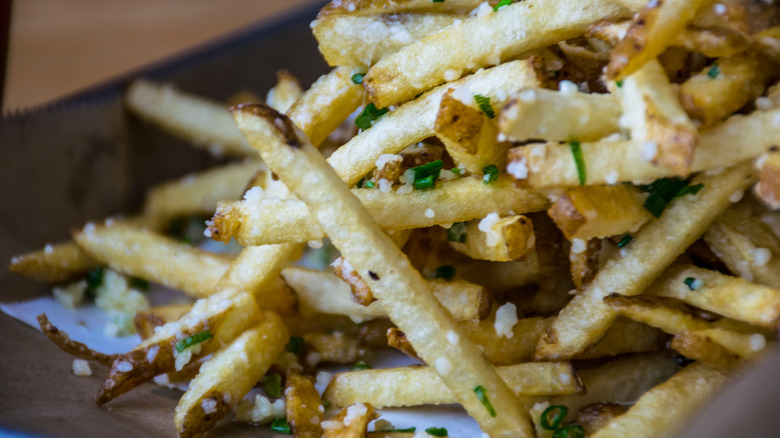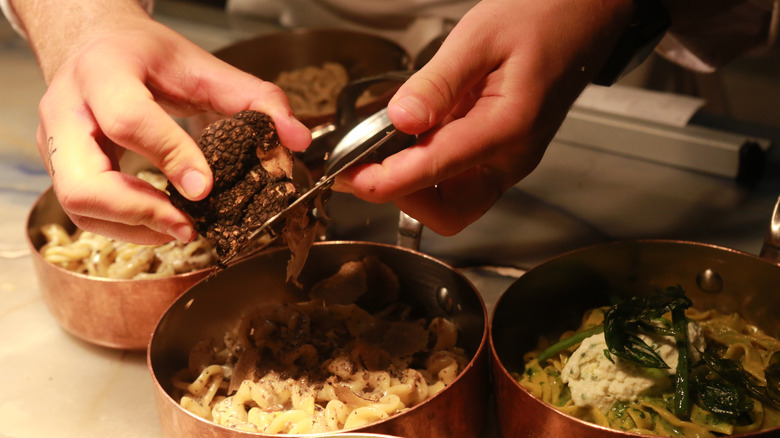Why You Should Avoid Ordering Truffle-Flavored Anything
While we are loath to judge, we are duty-bound to tell you that truffle flavoring, often presented as an oil, is considered a joke in the culinary community. Many chefs, other hospitality professionals, restaurant critics, and experienced diners won't touch the stuff. At first blush, who cares what a bunch of snobs have to say, right? Fair. But the reason that truffle oil is so maligned is because it's typically fake. So, not only are you not actually tasting real deal truffles when their purported oil is involved, but you're paying a premium to be deceived. There's a word for that where we come from: swine-dle.
Olive oil comes from olives. Avocado oil comes from avocados. So it is a fair assumption that truffle oil would come from truffles. But truffle oil made from truffles would be the considerable exception; a wide divergence from the synthetic norm. So, what are you getting on those purportedly enhanced orders of truffle mac and cheese, french fries, or, perhaps most ridiculously, pizza? Chemicals. Chemicals that, once you've tasted actual truffles, do little more than mimic their deep, earthy fragrance, if somehow inhaled through a sheet of hot plastic. It's among the most despicable dupes as these things go — leading the consumer to believe they're getting a taste of luxury while offering little more than adulterated canola — and one that gives us pause in any restaurant. If you see it on a menu, then someone either does not know what they're doing or intends to deceive.
You get what you pay for, and you'll sure pay for real truffles
White and black truffles, the most famous varieties of the underground fungus beloved by the pigs that sniff them out and fine diners alike, are bonafide luxuries. Like a lot of things, they're expensive due to their rarity and specialized sourcing. (How many truffle hunters do you know, species irrespective?) It's a naturally coveted combination. The resulting high price is similar to what makes us avoid caviar at restaurants, which is better at home anyway. You can have truffles at home, too, best shaved super thin and applied as a garnish on entrées like your most impressive freshly made pasta preparation.
Regalis, our favorite fancy food provider, sells (seasonally available) Périgord winter truffles for $140 an ounce. An ounce might seem small, but that's a lot of garnish. And $140 might seem like a lot, but the restaurant markup is going to be considerably higher overall, with less provenance transparency. Plus, if you're in the market for truffles to begin with, the odds are that you've blown just as much money on goofier whims. Just hopefully not truffle flavoring.

